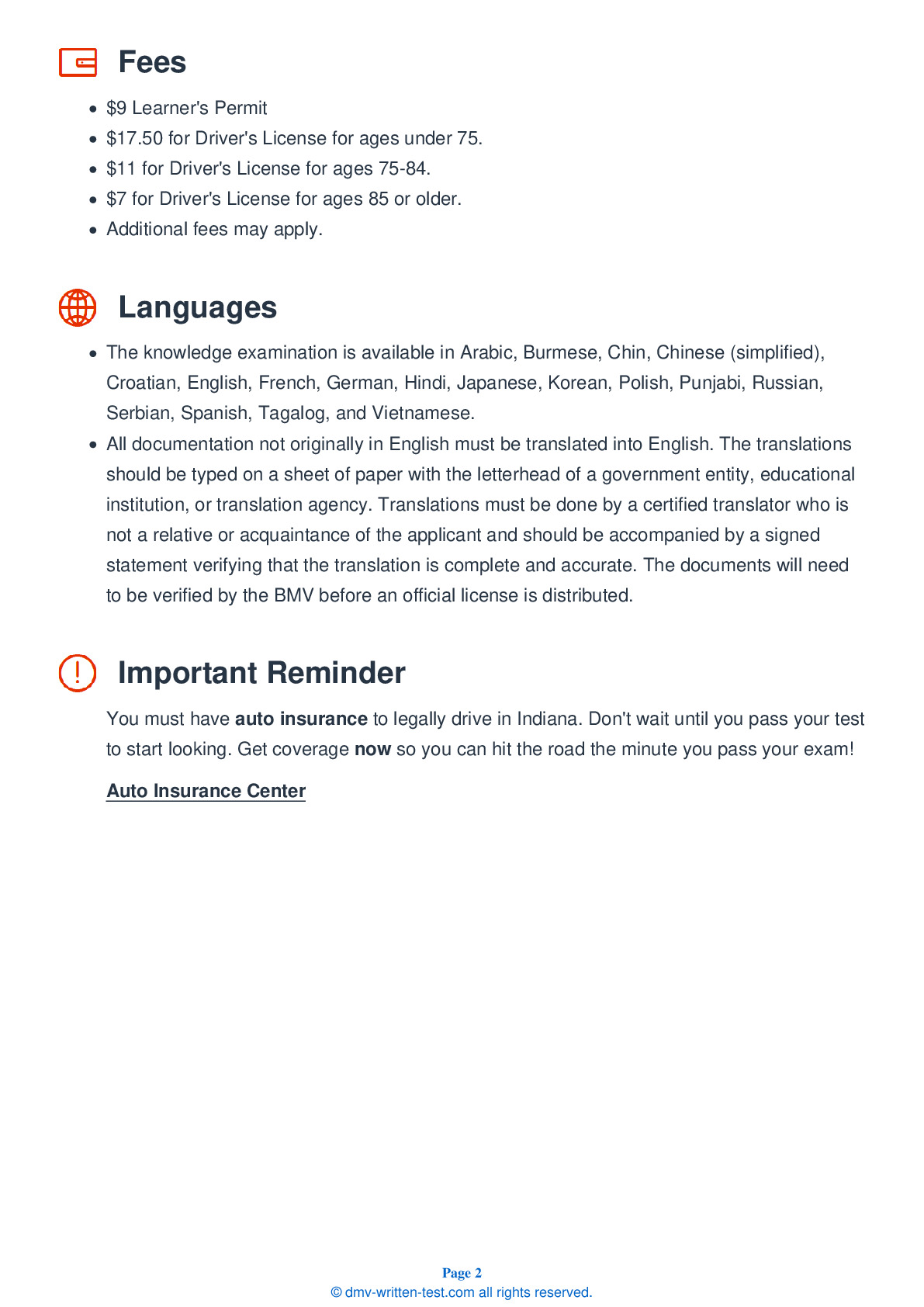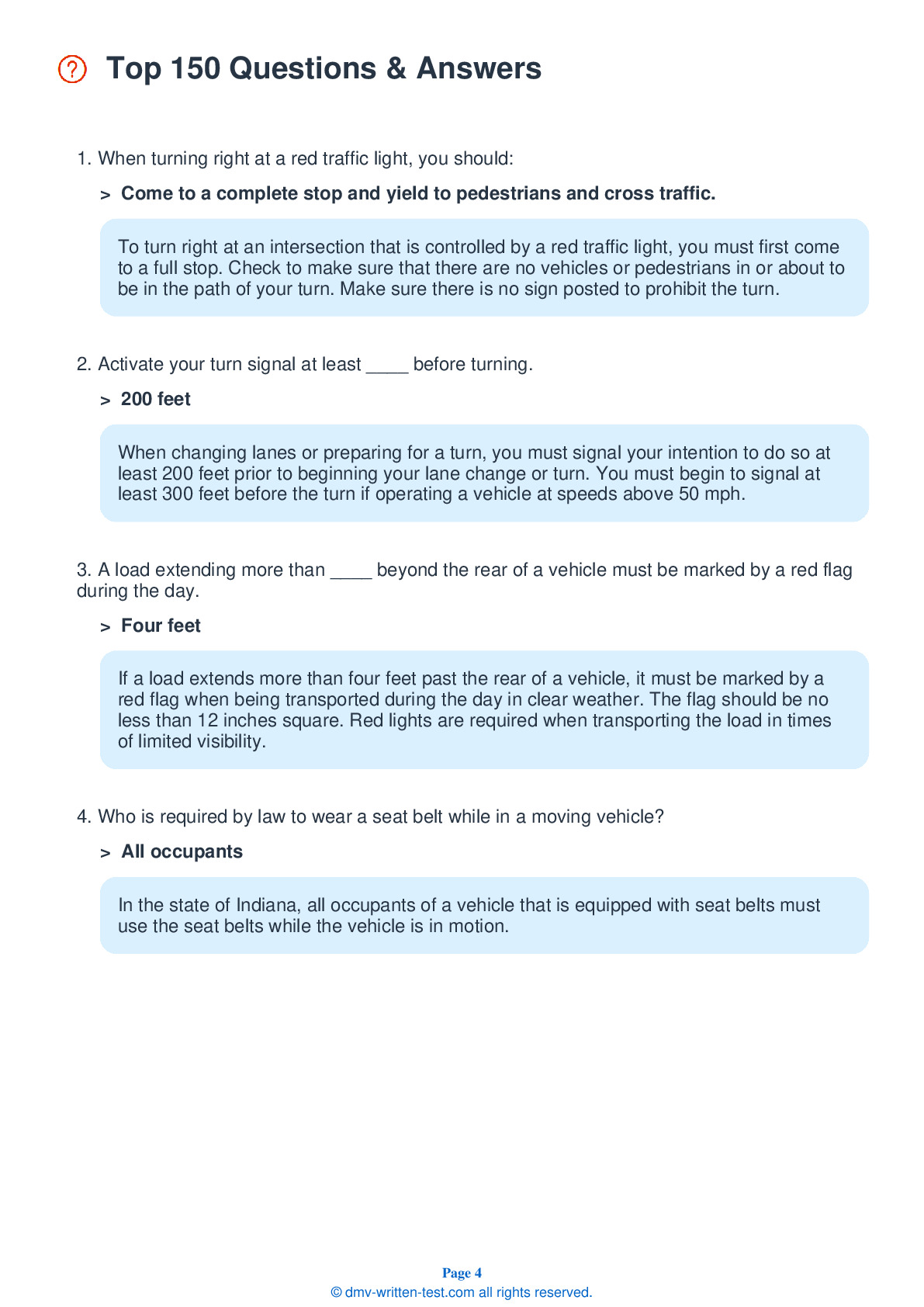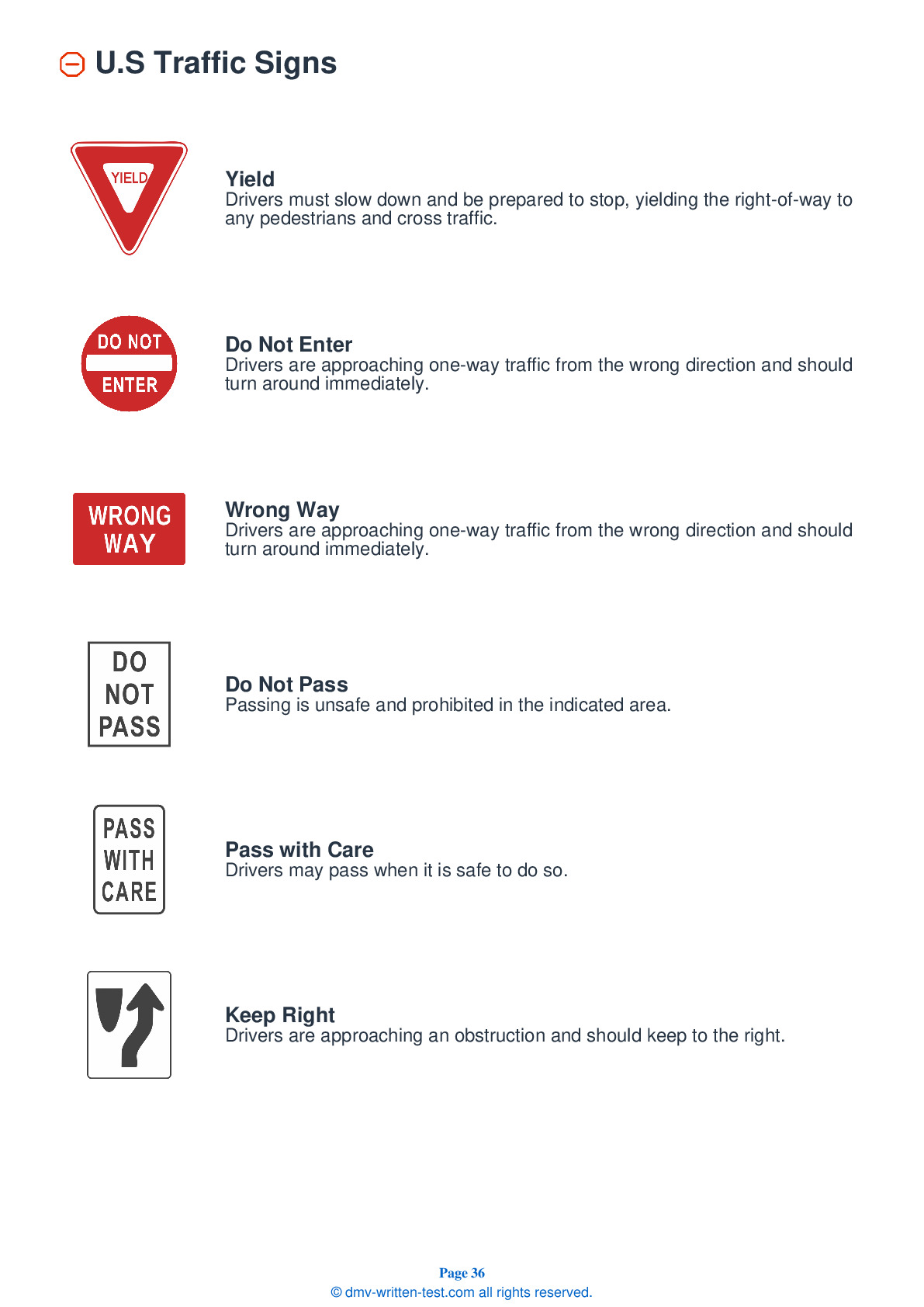2025 Indiana Permit Test 19
The following questions are from real DMV written tests. These are some of the actual permit questions you will face in Indiana. Each permit practice test question has three answer choices. Select one answer for each question and select "grade this section." You can find this button at the bottom of the drivers license quiz. For a complete list of questions and answers for Indiana please visit https://cheat-sheets.dmv-written-test.com/en/indiana/car.
Number of Tests
Number of Question
Passing Score
17. At a light rail intersection, always:
Explanation
You should never drive around lowered crossing gates. Always look both ways before turning across train tracks and always obey signs and traffic signals. Trains share the road with motor vehicles and bicyclists.
18. What color are pavement markings that separate traffic lanes moving in opposite direction?
Explanation
Yellow lines are used in the center of the road to separate lanes of traffic moving in opposite directions.
19. This road sign means:
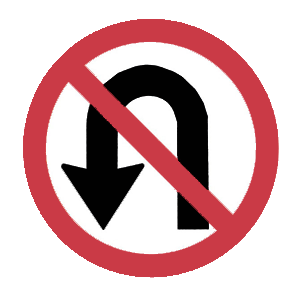
Explanation
This signs indicate that U-turns are prohibited in the location where it is posted.
20. Drivers must yield to a pedestrian:
Explanation
Drivers must always yield to pedestrians in the street, even if they are crossing against a red light or are otherwise being careless.
21. When two vehicles arrive to an intersection at the same time, which one has the right-of-way when no signs or signals indicate rules?
Explanation
At an intersection of two similar roads without a traffic control device, a driver must yield to a vehicle approaching from the right.
22. What does a flashing yellow traffic light mean?
Explanation
A flashing yellow traffic light indicates that you should drive with caution.
23. You are driving on a busy street and your vehicle’s accelerator sticks open. You should:
Explanation
If your vehicle’s accelerator sticks open, your vehicle will continue to maintain its speed or accelerate, even if you remove your foot from the gas pedal. Turn off the ignition, using care to move the ignition switch only far enough to stop the engine and not engage the steering wheel locking mechanism. Apply your brakes and move off the road to a safe area.
24. To avoid collisions with vehicles in your blind spots, you should:
Explanation
Before turning or changing lanes, turn your head and glance over your shoulder in the direction of your move to see if your blind spot is clear. Never rely on your mirrors alone.
25. When turning left, drivers must yield the right-of-way to:
Explanation
When turning left, drivers must yield the right-of-way to oncoming traffic. Drivers must also always yield the right-of-way to pedestrians, bicyclists, and other drivers who are already in the intersection.
26. You should honk your horn when you:
Explanation
Your horn should be used as a warning in situations where you think another driver or a pedestrian does not see you. For example, if a child begins to run into the street in front of your vehicle, you should sound your horn.
27. This sign means:
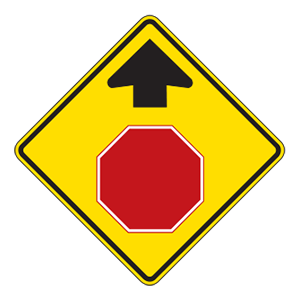
Explanation

